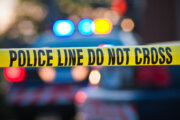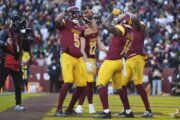Now, more than ever, young children and teenagers of all backgrounds and identities are seeing themselves and their families represented in literature. But in some places, books touching on diversity of race, religion, gender identity and sexual orientation are being taken off library shelves and removed from K-12 classroom curricula.
Book bans, while not a new phenomenon, have gained momentum in recent years. Censorship attempts have most recently targeted books that include LGBTQ characters or address issues of race and racism.
The American Library Association tracked 729 attempts to remove library, school and university materials in 2021, which involved 1,597 books. In comparison, the association tracked 156 attempts in 2020 and 377 in 2019.
“The nature of the requests that are being made are much more likely to come from political sources now than they did in the past,” says Alice O’Brien, general counsel for the National Education Association, a labor union. “That’s really a political censorship move, which is very different than a parent saying that particular book is not appropriate for my child.”
[Read: When Do Kids Learn to Read?]
Difference Between a Challenge and Ban
A challenge is an attempt to remove or restrict materials based on the objection of a person or group of people. Challenged materials still remain in circulation, unless a ban is enacted.
A ban is a potential outcome of a challenge, resulting in the materials being removed from a library or classroom. Teachers can be reprimanded for using restricted material.
When a book is banned from a district, “that just means it’s not accessible in the media center or the classrooms on that campus. But that doesn’t mean you couldn’t go across the street to the community library or find it online. It’s just that we do not provide the access to it,” says Adam Lane, principal of Haines City Senior High School in Florida. His school is in the Polk County Public Schools district, where 16 books were challenged this spring.
While books might be accessible elsewhere, banning books from school districts makes it more difficult for young children and teenagers to find literature that they might enjoy, says Jonathan Friedman, director of free expression and education at PEN America, a free-speech organization.
Books that are banned can be re-reviewed and returned to schools in certain instances, though that process can be difficult.
Why Are Books Banned?
A book is typically banned due to sexually explicit content, offensive language or because it was deemed unsuitable for any age group, according to the ALA.
But reasons for challenging books vary by person or group. No Left Turn in Education, a parent advocacy group, for instance, developed a list of books that it claims “spread radical and racist ideologies to students,” including Ibram X. Kendi’s “Antiracist Baby,” Jewell Parker Rhodes’ “Ghost Boys” and Margaret Atwood’s Booker Prize-winner “The Handmaid’s Tale.”
[MORE: What Is Critical Race Theory?]
“People who seek to ban books believe they’re operating with the best interest of children or the public in mind,” says Miah Daughtery, the literacy director of content advocacy and design at NWEA, a nonprofit research and educational services provider serving K-12 students. “They think they’re shielding children from what they believe are difficult ideas, topics and information.”
Many experts argue that these bans infringe on the rights of students and other parents.
“Parents always have that choice to parent their children,” says Jennisen Lucas, president of the American Association of School Librarians, a division of ALA. “But when that parent decides that they don’t think it’s appropriate for their child, therefore it’s not appropriate for any children, is when it becomes a censorship issue, as opposed to just parent discernment.”
Process of Banning a Book in K-12 Schools
Most book challenges start at the school level, with parents expressing their individual concerns to a librarian. A librarian might mark in their records that a student is not allowed to check out a certain book from the school library. “If the child asks me why, I’m going to refer them to their parents because it’s their parents’ decision,” says Lucas, who is also the district librarian for Park County School District #6 in Wyoming.
But if a parent wants to pull the book off the shelf altogether, the district becomes involved. Whoever is challenging — a parent, student or community group — typically has to fill out paperwork that asks questions about the book, such as why they believe it’s inappropriate, whether or not they read the book and what would be a better replacement on the same topic.
It varies by district, but usually a designated committee or the school board then decides if the book should be banned, returned to circulation or returned with age restrictions.
“A lot of times what committees end up bogged down by is a discussion about age appropriateness,” Friedman says. “But there can be vast differences in how people define and think about what is appropriate for what ages.”
However, states and government officials are also getting involved in the process.
From July 1, 2021 to March 31, 2022, book bans occurred in 26 states and 86 districts, according to a PEN America report. These districts represent nearly 3,000 schools with a combined enrollment of more than two million students. Texas has the largest number of districts enacting bans, with 16 (the state has more than 1,000 districts total).
Some states are adopting legislation that in some way limits instruction or curricular materials related to race or sex, O’Brien says. “Those (bills) obviously do have a real chilling effect on what teachers are deciding to teach in those states.”
Oklahoma Senator Rob Standridge, for instance, introduced a bill in December 2021 that would prohibit public school districts, public charter schools and public school libraries from “having or promoting books that address the study of sex, sexual preferences, sexual activity, sexual perversion, sex-based classifications, sexual identity or gender identity.”
“Our education system is not the place to teach moral lessons that should instead be left up to parents and families,” Standridge said in a statement.
Friedman says that “people in many parts of the country don’t seem to remember that the school library has been deemed a space that has special constitutional protections for open access to information and ideas. And as such, school districts are meant to exercise great care and make decisions in a narrow fashion to uphold students’ right to access information and not be removing materials in a way that is suppressing the ideas that a particular individual (or group) doesn’t like.”
Examples of Censored Books
According to ALA, these were the top 10 most commonly banned or challenged books in 2021:
1. “Gender Queer” by Maia Kobabe
2. “Lawn Boy” by Jonathan Evison
3. “All Boys Aren’t Blue” by George M. Johnson
4. “Out of Darkness” by Ashley Hope Perez
5. “The Hate U Give” by Angie Thomas
6. “The Absolutely True Diary of a Part-Time Indian” by Sherman Alexie
7. “Me and Earl and the Dying Girl” by Jesse Andrews
8. “The Bluest Eye” by Toni Morrison
9. “This Book is Gay” by Juno Dawson
10. “Beyond Magenta” by Susan Kuklin
Most of the books on the list were written by Black or LGBTQ authors. Among the reasons cited for the bans: LGBTQ content, sexually explicit content, profanity, violence and anti-police messaging.
“A book provides people access into lives that are either like theirs, so their existence can be affirmed, or it opens up a door to learn about someone else whose existence is different from yours,” Daughtery says. “So even if you take away a book, you’re not changing who (they) are.”
[READ: What Library Science Is and How to Become a Librarian.]
Impact of Book Bans
Representation matters for students; research shows it’s beneficial for academic engagement and achievement. If a student is unable to find books that reflect their own life experiences, they can feel isolated, experts note.
“It’s incredibly important for an LGBTQ student who is being bullied in school and doesn’t have support from their family to see that there are people in the world who are are also LGBTQ and are thriving,” O’Brien says. “It’s lifesaving for them. And the same is true for students of color. They need to see their experiences validated and reflected in the school curriculum and in our school library.”
Most librarians who are certified in grades K-12 receive special training on how to judge age appropriateness and where books belong in collections. So these bans are “disheartening because it feels very much as though our professionalism is questioned,” Lucas says.
Library bans also can impact the types of text that teachers are allowed to use in the classroom.
“As a teacher, it’s my responsibility to teach these kids to be open-minded, look at these stories, learn from them and make your own choices. But then these choices are taken away from them. It almost contradicts what I’m teaching them in my classroom,” says Nicole Grassel-Torres, an English teacher at Haines City Senior High School and member of a book review committee in Polk County. “And if a text is taken away from a library, who’s to say they can’t take away a text we are able to teach in our curriculum.”
More from U.S. News
How to Improve Reading Skills in the Early Grades
What to Know About ‘Grow Your Own’ Teacher Programs
How to Get a Teaching Degree and Become a Teacher
Book Bans: What to Know originally appeared on usnews.com







